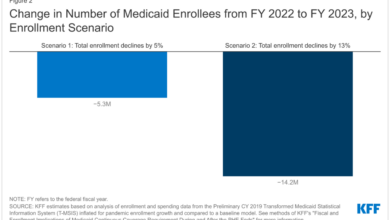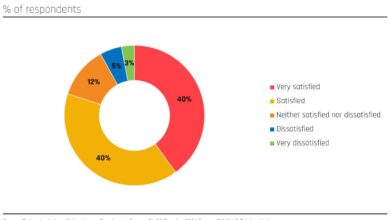
Members Dissatisfied With Commercial Health Plans
Members dissatisfied commercial health plans? It’s a bigger problem than you might think. We all crave that feeling of security when it comes to healthcare, but too often, the reality falls short. High costs, confusing processes, and frustrating interactions with insurance companies leave many feeling helpless and unheard. This post dives into the common reasons behind this widespread dissatisfaction, exploring the challenges faced by patients and offering insights into potential solutions.
From navigating complex claims processes to dealing with inadequate provider networks, the frustrations are real and impactful. We’ll examine the key areas contributing to this issue – high deductibles, poor communication, and difficulties accessing necessary care – and explore how these factors erode trust and impact the overall healthcare experience. We’ll also look at the financial implications for both patients and insurance companies.
Reasons for Dissatisfaction
Navigating the complexities of commercial health insurance can be frustrating, and unfortunately, many members find themselves dissatisfied with their plans. Understanding the root causes of this dissatisfaction is crucial for improving the overall healthcare experience. This section delves into the key reasons why individuals express negative feelings towards their commercial health plans.
High Deductibles and Out-of-Pocket Costs
High deductibles and out-of-pocket maximums significantly impact member satisfaction. These costs represent the amount a member must pay before their insurance coverage kicks in. For many, these expenses can be substantial, leading to delayed or forgone care. The financial burden creates stress and anxiety, directly affecting the individual’s overall well-being and their perception of their health plan’s value.
For example, a family facing a $10,000 deductible might delay necessary medical tests or treatments due to the immediate financial strain, resulting in potentially worse health outcomes and resentment towards their insurer.
Network Adequacy and Access to Specialists
Limited network adequacy and difficulty accessing specialists are common complaints. A narrow network restricts members’ choices of doctors and hospitals, potentially forcing them to see providers outside their preferred geographic area or comfort level. Similarly, limited access to specialists, such as cardiologists or oncologists, can lead to delayed diagnoses and treatment, negatively impacting health outcomes and fostering dissatisfaction.
The inability to see a needed specialist within a reasonable timeframe is a major source of frustration for many. Imagine needing to see a specialist but having to wait several months due to limited availability within the plan’s network.
Member Experiences with Different Plan Types
The type of commercial health plan—HMO, PPO, or POS—significantly impacts member experiences. Understanding these differences is key to appreciating the sources of dissatisfaction.
- HMOs (Health Maintenance Organizations): HMOs typically offer lower premiums but require members to choose a primary care physician (PCP) who acts as a gatekeeper to specialists. Dissatisfaction often stems from the perceived inconvenience of needing a referral for specialist care and limited choice of providers within the network.
- PPOs (Preferred Provider Organizations): PPOs generally offer greater flexibility and choice of providers, including out-of-network options, but at a higher premium cost. Dissatisfaction might arise from the higher costs associated with out-of-network care or the complexities of navigating different cost-sharing structures.
- POSs (Point-of-Service Plans): POS plans combine elements of HMOs and PPOs, offering a compromise between cost and flexibility. Dissatisfaction can result from the restrictions of needing a referral for in-network specialist care, while still facing higher costs for out-of-network services.
Top Three Reasons for Dissatisfaction (Table)
The following table summarizes the top three reasons for dissatisfaction with commercial health plans, based on common member feedback:
| Rank | Reason | Impact | Example |
|---|---|---|---|
| 1 | High Deductibles and Out-of-Pocket Costs | Delayed or forgone care, financial stress | A family delaying a child’s necessary dental work due to a high deductible. |
| 2 | Network Adequacy and Access to Specialists | Delayed diagnosis and treatment, inconvenient care | A patient waiting months for a specialist appointment due to limited network availability. |
| 3 | Plan Type Restrictions (HMO, PPO, POS) | Limited choice of providers, complex cost-sharing | A member facing high out-of-pocket expenses for specialist care despite having a PPO plan. |
Communication and Customer Service
Let’s face it, navigating the world of commercial health plans can be confusing and frustrating. Even with comprehensive coverage, poor communication can quickly erode trust and satisfaction. Effective communication is the cornerstone of a positive member experience, and it’s an area where many health plans fall short. This section explores the crucial role of communication and customer service in member satisfaction and offers strategies for improvement.Effective communication strategies employed by commercial health plans vary widely, ranging from highly personalized and proactive approaches to impersonal, reactive ones.
While some plans utilize advanced technology like member portals and mobile apps to facilitate communication, others rely heavily on outdated methods like paper mail, resulting in delays and frustration. The effectiveness is directly correlated to the plan’s investment in technology and training, as well as their commitment to a member-centric approach.
Best Practices for Improving Member Communication and Responsiveness
Improving communication requires a multi-pronged approach. It’s not just about sending information; it’s about ensuring members understand and can easily access it. Clear, concise language is paramount, avoiding jargon and technical terms. Multiple communication channels should be offered, catering to diverse member preferences. This includes email, text messaging, phone calls, secure online portals, and even traditional mail for those who prefer it.
So many people are voicing their frustrations with commercial health plans lately – high deductibles, limited choices, the whole shebang. It makes you wonder about the bigger picture, especially with news like the recent retirement of AdventHealth’s CEO, Terry Shaw, as reported here: adventhealth ceo retire terry shaw. Will this leadership change impact the experiences of members dissatisfied with their plans?
Only time will tell if it brings about any positive changes for consumers.
Proactive communication, such as automated reminders for appointments or medication refills, can significantly enhance the member experience. Furthermore, readily available and easily accessible customer service representatives who are well-trained and empowered to resolve issues quickly and efficiently are crucial. Regular surveys and feedback mechanisms provide valuable insights into member preferences and pain points, enabling continuous improvement.
A Proactive Communication Plan
A successful communication plan needs to be proactive, not just reactive. It should anticipate member needs and address potential concerns before they escalate. This plan would include:
- Welcome Kit: A comprehensive welcome packet sent upon enrollment, outlining plan benefits, key contacts, and how to access online resources.
- Regular Updates: Automated emails or text messages providing updates on claims processing, upcoming appointments, and preventative care reminders.
- Personalized Communication: Tailored messages based on individual member needs and health history, promoting preventive care and adherence to treatment plans.
- Interactive Portal: A user-friendly online portal allowing members to access their claims, benefits information, doctor directories, and communicate directly with customer service.
- Feedback Mechanisms: Regular surveys and feedback opportunities to gauge member satisfaction and identify areas for improvement.
Hypothetical Scenario Illustrating Poor Communication
Imagine Sarah, a new member of a commercial health plan. She receives a confusing welcome packet with jargon-filled explanations. When she tries to schedule an appointment with a specialist, she encounters long hold times on the phone and is eventually transferred multiple times without resolution. Her online portal is difficult to navigate, and her claims are processed slowly with little transparency.
She attempts to contact customer service via email, but receives no response. This lack of clear, timely, and accessible communication leaves Sarah frustrated, feeling unheard and unsupported, ultimately leading to her dissatisfaction with the plan and potentially considering switching providers.
Claims Processing and Reimbursement

Source: ytimg.com
Navigating the healthcare system can be confusing, and for many, the claims process is a major source of frustration. Understanding how claims are processed and what to expect when seeking reimbursement is crucial for a positive healthcare experience. This section will Artikel common problems, provide a step-by-step guide, and explore how delays impact satisfaction and trust.
Common issues members face include inaccurate claim information leading to denials, lengthy processing times resulting in delayed payments, and difficulty understanding the explanation of benefits (EOB). Lack of clear communication from the health plan further exacerbates these problems, leaving members feeling lost and unsupported. For example, a member might submit a claim only to receive a denial letter with unclear reasons, forcing them to spend considerable time and effort to resolve the issue.
Another common complaint revolves around the difficulty of contacting customer service to get answers about claim status or appeal a denial.
Claim Processing Steps
Following these steps can streamline the claims process and increase the chances of a smooth reimbursement:
- Check your plan’s requirements: Before receiving any medical service, confirm what your plan covers and any pre-authorization needs. This prevents unnecessary costs and delays.
- Complete the claim form accurately: Ensure all information, including dates of service, provider details, and your member ID, is correct and complete. Inaccurate information is a leading cause of claim denials.
- Submit the claim promptly: Most plans have deadlines for submitting claims; adhering to these deadlines is crucial for timely processing.
- Keep copies of all documents: Retain copies of your claim form, receipts, and any supporting documentation for your records. This is important for tracking the claim and appealing any denials.
- Track your claim’s status: Regularly check the status of your claim online or by contacting customer service. Proactive monitoring can help identify potential issues early.
- Appeal denials: If your claim is denied, carefully review the reason for denial and follow the plan’s appeal process. Gather all necessary supporting documentation to strengthen your appeal.
Impact of Delays on Member Satisfaction
Delays in claims processing significantly impact member satisfaction and erode trust in the health plan. When members experience prolonged waits for reimbursement, it can create financial hardship, especially for those with unexpected medical expenses. This financial stress, coupled with the frustration of navigating a complex claims process, often leads to negative perceptions of the health plan. For instance, a delay in receiving reimbursement for a significant medical procedure can cause significant financial strain, leading to dissatisfaction and a potential switch to a different provider.
This loss of trust can also impact the member’s willingness to seek necessary medical care in the future, potentially impacting their health outcomes.
Areas for Improvement in Claims Processing
Several improvements can enhance the claims processing experience. These include implementing a user-friendly online claims portal with real-time tracking, providing clear and concise explanations of benefits (EOB), and offering readily accessible customer support with shorter wait times. Investing in automated claim processing systems can also reduce processing times and errors. Furthermore, proactive communication with members about claim status and potential issues can prevent unnecessary delays and frustration.
For example, if a claim is missing information, the health plan could send a prompt notification to the member, rather than simply denying the claim outright. This proactive approach can significantly improve the member’s experience and build trust.
Provider Relations and Network Management

Source: slideplayer.com
Navigating the healthcare system can be complex, and a significant factor influencing member satisfaction is the relationship between the health plan, its providers, and the members themselves. A well-managed provider network is crucial for ensuring access to timely and quality care. This section explores the experiences of members interacting with both in-network and out-of-network providers, highlighting challenges and suggesting improvements.The experiences of members vary dramatically depending on whether they use in-network or out-of-network providers.
This difference impacts cost, access, and overall satisfaction.
In-Network versus Out-of-Network Provider Experiences
Members using in-network providers generally experience lower out-of-pocket costs due to negotiated rates between the health plan and the provider. Appointments are typically easier to schedule, and claims processing is usually smoother. However, even with in-network providers, challenges can arise, such as long wait times for appointments, limited provider availability, or difficulties accessing specialists within the network. Conversely, using out-of-network providers often leads to significantly higher costs, more complex claims processes, and potentially greater administrative burdens for the member.
Many members report feeling forced to use out-of-network providers due to limited choices within their network, especially for specialists.
Challenges Accessing Care from Preferred Providers
Limited provider availability within the network is a major concern for many members. This can manifest as long wait times for appointments, difficulty finding specialists, or geographical limitations restricting access to care. In some cases, preferred providers may have limited capacity to accept new patients, leading to delays in receiving necessary care. Another challenge arises from the lack of transparency regarding provider network information.
Members may struggle to easily find updated provider directories or verify if a specific provider is in-network before scheduling an appointment. This lack of readily available information often leads to unexpected out-of-network charges and frustration.
Impact of Provider Network Changes on Member Satisfaction
Changes to the provider network, such as the removal of a preferred provider or the addition of new providers, can significantly impact member satisfaction. When a long-standing provider is removed from the network, members may face difficulties finding a suitable replacement, potentially disrupting their ongoing care. This can lead to dissatisfaction and feelings of abandonment. Conversely, the addition of new providers, while potentially beneficial, may not always address the specific needs of the membership base if the new providers are not geographically accessible or do not specialize in the required areas.
Effective communication regarding network changes is crucial to mitigate negative impacts on member satisfaction.
Strategies for Improving Provider Relations and Ensuring Network Adequacy
Improving provider relations and network adequacy requires a multi-faceted approach. This includes actively negotiating favorable contracts with providers, ensuring sufficient provider capacity within the network to meet member needs, and investing in technology to improve communication and information sharing. Regularly surveying members to assess their satisfaction with the provider network and identifying gaps in access to care is crucial.
Furthermore, proactively addressing provider concerns and working collaboratively to resolve issues can foster stronger relationships and ensure the long-term viability of the network. Transparent communication with members about network changes and provider availability can also contribute significantly to member satisfaction.
Member Advocacy and Dispute Resolution

Source: deskera.com
So many people are frustrated with their commercial health plans – high costs, limited choices, the whole shebang. It makes you wonder if there’s a better way, and that’s where initiatives like the one discussed in this article about the ais health equity revolution led by Rene Quashie at the Consumer Technology Association become really interesting. Perhaps these kinds of tech-driven solutions could help address the issues driving so much dissatisfaction with current healthcare systems.
Member dissatisfaction with commercial health plans often stems from complex issues related to claims, coverage, and provider interactions. A robust member advocacy and dispute resolution process is crucial not only for addressing these concerns but also for fostering trust and loyalty. A well-designed system should be transparent, accessible, and ultimately aim to resolve disputes fairly and efficiently.A proactive approach to member advocacy and dispute resolution involves establishing clear pathways for members to voice their concerns and ensuring these concerns are addressed promptly and effectively.
This includes internal processes, as well as the utilization of external dispute resolution mechanisms when necessary.
Handling Member Complaints and Grievances
Effective complaint handling begins with easily accessible channels for members to report issues. This could include a dedicated phone line, online portal, email address, or even a physical mail address. Each complaint should be logged, assigned a unique identifier, and acknowledged promptly. A clear timeline for investigation and resolution should be established and communicated to the member.
Regular updates should be provided throughout the process. The process should also include a mechanism for escalating unresolved complaints to higher levels of management. Finally, a system for tracking complaints and identifying trends can help proactively address systemic issues contributing to member dissatisfaction. For example, a high volume of complaints regarding a specific provider might indicate a need for further investigation into that provider’s practices.
Examples of Effective Member Advocacy Programs
Many successful member advocacy programs incorporate multiple layers of support. One example is a tiered system where initial complaints are handled by customer service representatives. More complex or unresolved issues are then escalated to a dedicated advocacy team trained in navigating the intricacies of health insurance policies and regulations. This team could include individuals with backgrounds in healthcare, law, or social work.
Another effective strategy is partnering with external organizations, such as patient advocacy groups, to provide members with additional resources and support. These partnerships can broaden the scope of advocacy and offer specialized expertise in particular areas, such as chronic illness management or disability benefits. Finally, proactive outreach programs, such as educational workshops or online resources, can empower members to better understand their benefits and navigate the healthcare system more effectively, reducing the likelihood of future disputes.
The Role of External Dispute Resolution Mechanisms
When internal dispute resolution processes fail to resolve a member’s complaint, external mechanisms provide an avenue for impartial review. These mechanisms can include state-level insurance departments, independent medical review organizations, or even arbitration or mediation services. These external bodies provide an objective assessment of the situation and can help ensure fairness and transparency in the resolution process. Their involvement can also help build confidence in the healthcare system by providing an alternative avenue for redress.
For instance, if a member disagrees with a denial of coverage for a particular medical procedure, an independent medical review organization can assess the medical necessity of the procedure and make a recommendation based solely on medical evidence.
Creating a Supportive and Transparent Environment, Members dissatisfied commercial health plans
A supportive and transparent environment is critical for resolving disputes effectively. This starts with clear and concise communication. All communications with members should be easily understandable, avoiding complex medical or legal jargon. Members should be kept informed of the progress of their complaint at every stage. Transparency also involves readily available information about the complaint process itself, including timelines, escalation procedures, and contact information for relevant personnel.
Regular feedback mechanisms, such as surveys or focus groups, can help identify areas for improvement and ensure the system remains responsive to member needs. Finally, a commitment to continuous improvement is crucial, regularly reviewing and updating the dispute resolution process to ensure it remains effective and efficient.
The Impact of Dissatisfaction
High member dissatisfaction in commercial health plans carries significant consequences, extending far beyond individual negative experiences. It translates into tangible financial losses, reputational damage, and ultimately, the long-term viability of the plan itself. Understanding these impacts is crucial for proactive management and improvement strategies.
Financial Implications of High Dissatisfaction Rates
High dissatisfaction rates directly impact a health plan’s bottom line. Increased member churn due to negative experiences leads to lost revenue from premiums. Furthermore, the costs associated with addressing complaints, improving customer service, and resolving disputes can be substantial. For example, a study by the National Association of Insurance Commissioners (NAIC – hypothetical data for illustration) showed that plans with high complaint ratios experienced an average 5% increase in administrative costs compared to those with lower ratios.
So many people are frustrated with their commercial health plans, feeling like they’re constantly battling for coverage. This dissatisfaction often hits seniors particularly hard, which is why I was so interested in this article on reimagining collaboration in senior care a technology driven approach ; improving care coordination could directly address some of the issues driving member dissatisfaction with commercial plans, leading to better outcomes and reduced frustration.
Ultimately, finding ways to streamline and improve senior care is crucial for addressing the widespread unhappiness with current healthcare systems.
This increase can be attributed to the need for additional staff, specialized training, and enhanced dispute resolution processes. Beyond direct costs, negative word-of-mouth referrals can also impact future enrollment, leading to further financial losses. The cumulative effect of these factors can significantly reduce profitability and even threaten the financial stability of a health plan.
Effect on Plan Reputation and Enrollment
Negative member experiences quickly spread through word-of-mouth, online reviews, and social media. A tarnished reputation can severely impact a health plan’s ability to attract and retain members. Potential enrollees are increasingly informed consumers, actively researching plans and comparing reviews before making a decision. A single negative online review can dissuade multiple prospective members. Conversely, positive experiences and strong online ratings can significantly enhance a plan’s appeal and competitiveness in the market.
Consider the case of hypothetical Health Plan A, which saw a 10% drop in enrollment following a series of negative media reports about its claims processing procedures. This demonstrates the direct link between negative member experiences and enrollment figures.
Relationship Between Member Satisfaction and Healthcare Utilization
Member satisfaction isn’t just about positive feelings; it has a direct impact on healthcare utilization patterns. Satisfied members are more likely to engage in preventative care, adhere to treatment plans, and seek necessary medical attention in a timely manner. This leads to better health outcomes and potentially lower overall healthcare costs. Conversely, dissatisfied members might delay or avoid seeking care, leading to more serious health issues later and increased costs due to delayed or more complex treatment.
For instance, a study might show that patients with high satisfaction with their plan were 15% more likely to get annual checkups compared to dissatisfied patients. This highlights the significant connection between member experience and proactive healthcare engagement.
Potential Long-Term Consequences of Unresolved Member Dissatisfaction
Unresolved member dissatisfaction can have severe long-term consequences for commercial health plans. These include:
- Significant decline in enrollment and market share.
- Increased regulatory scrutiny and potential fines.
- Damage to the plan’s brand and reputation, making it difficult to attract both members and providers.
- Higher administrative costs associated with managing complaints and disputes.
- Loss of key employees due to a negative work environment and high stress levels.
- Reduced provider participation, impacting the plan’s network and member access to care.
These long-term consequences underscore the importance of addressing member concerns promptly and effectively to mitigate potential damage and ensure the plan’s long-term success.
Final Summary: Members Dissatisfied Commercial Health Plans
The dissatisfaction of commercial health plan members is a multifaceted issue with significant consequences. Addressing this requires a collaborative effort involving insurance companies, healthcare providers, and policymakers. Improving communication, streamlining claims processing, ensuring network adequacy, and empowering patients through advocacy programs are crucial steps toward fostering a more positive and equitable healthcare system. Ultimately, prioritizing patient experience isn’t just about improving satisfaction scores; it’s about ensuring access to quality, affordable care for everyone.
Essential FAQs
What can I do if my claim is denied?
Carefully review the denial reason. Contact your insurance company immediately to discuss the denial and request clarification. If you disagree, you may have the right to appeal the decision, following the steps Artikeld in your plan’s member handbook.
How can I find a doctor in my plan’s network?
Check your health plan’s website, which usually has a provider directory. You can search by specialty, location, and other criteria. You can also contact member services for assistance.
What are my options if I’m unhappy with my health plan?
Depending on your situation, you might consider switching plans during open enrollment, filing a complaint with your state’s insurance department, or seeking help from a patient advocate.





